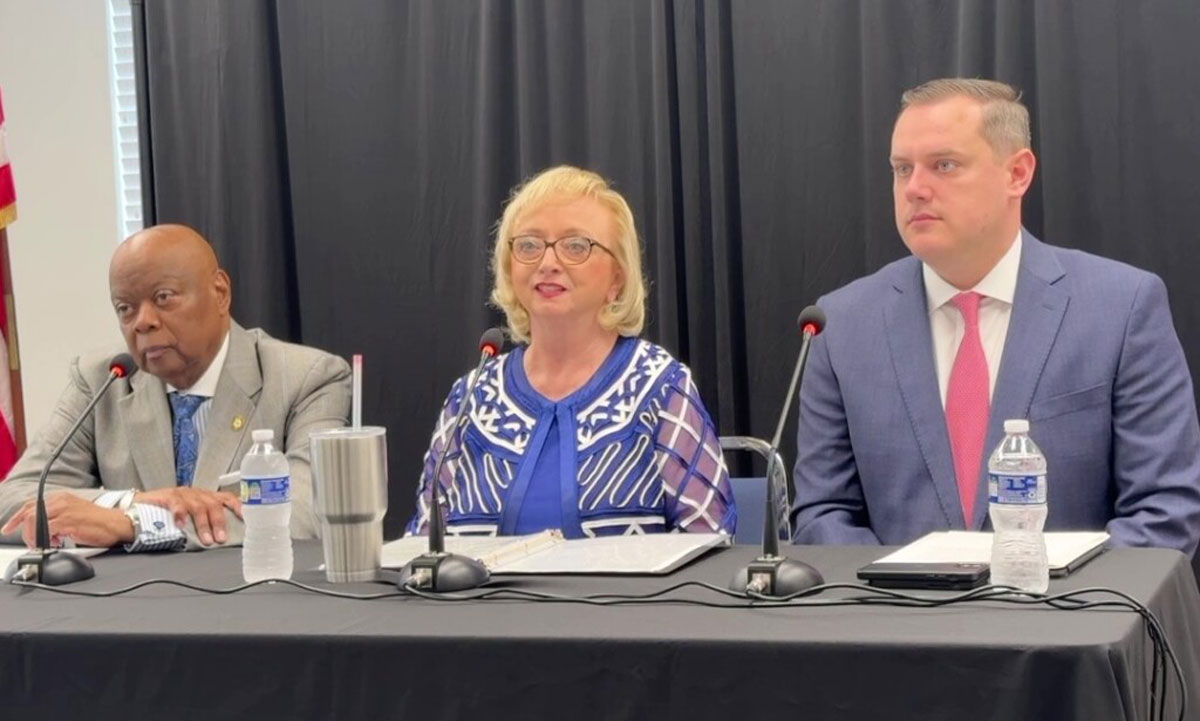Maryland Superintendent Announces Task Force to Assess Academic Achievement
The group will be led by the Center for Assessment.

Get stories like these delivered straight to your inbox. Sign up for The 74 Newsletter
Five days after the Maryland State Board of Education unanimously voted to appoint Carey Wright as the state’s permanent superintendent of schools, she held a news conference on Monday to announce the creation of a task force to assess academic achievement.
Wright said members of this group will include local superintendents, principals and higher education representatives to provide recommendations on how to better assess how students are doing in the classroom. The group will be led by the Center for Assessment, a national education nonprofit that designs, implements and evaluates accountability systems to see how students are learning.
Part of this initiative stems from the Maryland Comprehensive Assessment Program (MCAP), which measures a student’s proficiency in math, English and science.
The Maryland Report Card uses a rating system from one to five stars to measure overall school performance such as graduation rates, attendance and academic performance.
MCAP results are among the factors that determine the state’s report card and school star rating system.
Although 76% of Maryland schools received at least three out of five stars on the state’s report card released in December, only 47% of all students in third to eighth grades scored on a proficient level in English language arts. The percentage was even lower in math, at nearly 25% proficiency.
“That’s doesn’t ring true,” Wright said. “You can’t have three quarters of your schools being rated as excellent, if you will, and then not seeing student achievement, almost commensurate with that.”
The task force, which will meet about twice a month, will begin its work Thursday and provide recommendations by December to the state Board of Education. Because this accountability system to assess student achievement is in state statute, any proposed changes would need to be done before the Maryland General Assembly convenes for its 90-day legislative session in January.
There’s also a plan to update the online report card to make it easier for parents, guardians and students to comprehend.
“The report card website needs to be a lot more accessible for folks to understand and be able to access data for their schools in their districts,” said Joshua Michael, vice president of the school board. “So delighted that Dr. Wright will be leading that portion of the accountability [measure].”
Wright, who will begin her tenure without the interim title July 1, said conversations “have to start now” on trying to diversify the state’s teacher workforce.
That’s part of the priorities in the Blueprint for Maryland’s Future education reform plan, but some local school leaders have documented challenges in hiring and retaining qualified teachers, and even recruiting teachers of color.
Although Maryland is one of the most diverse states in the nation, a September 2023 report from The Century Foundation noted that 70% of the teachers in the state were white in 2022. In comparison, about 19% were Black and 4% were Latino.
The percentages of the student population at the time: About 40% white, 33% Black and 21% Latino.
Wright recalled a program in place while she was schools superintendent in Mississippi that she would like to replicate in Maryland.
During her nine-year tenure in Mississippi, which ended with her retirement in 2022, the state became the first in the nation to launch a state-run residency teacher program to fill teaching positions and lack of diverse teachers.
“I think we need to do a better job of campaigning and outreach,” Wright said Monday about boosting Maryland’s teacher workforce. “It’s looking to see how we are helping districts recruit at specific areas. Children need to see somebody that looks like them standing in front of the classroom.”
This story was originally published in Maryland Matters.
Get stories like these delivered straight to your inbox. Sign up for The 74 Newsletter

;)